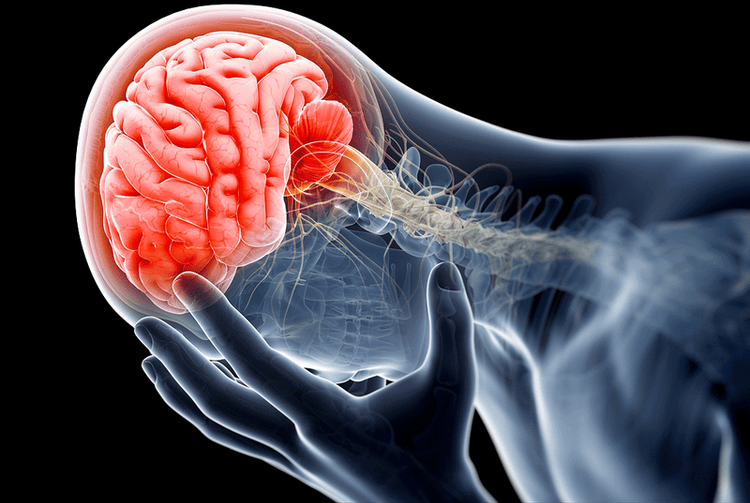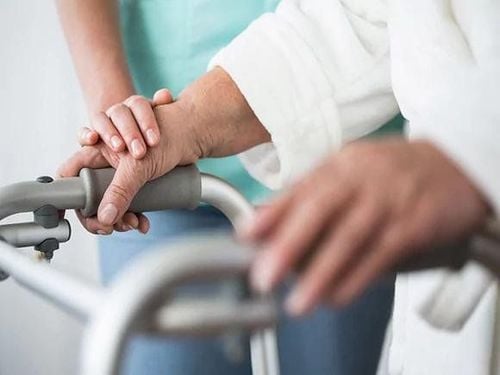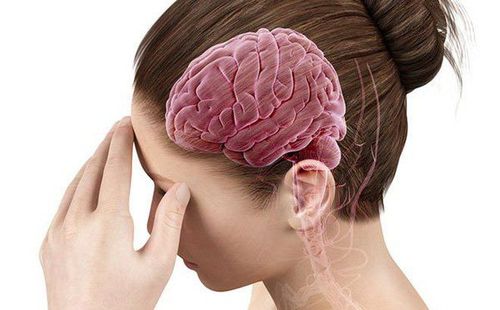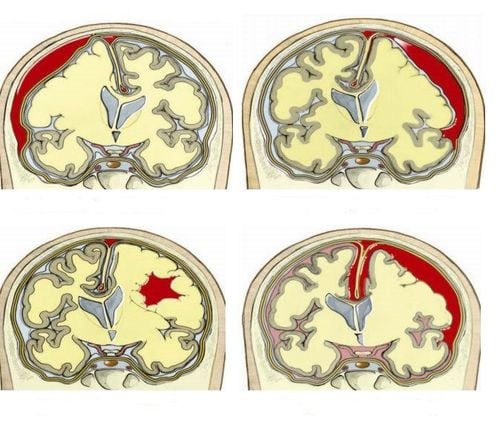This is an automatically translated article.
The article was professionally consulted by Master, Specialist Doctor I Nguyen Thi Thanh Binh - Rehabilitation Doctor - Department of General Surgery - Vinmec Danang International General HospitalAfter a traumatic brain injury, some patients are fortunate enough to make a full recovery while others have sequelae of weakness in part of the body, making it difficult to balance to stand and walk, or also when you can't walk. At this time, it is extremely important to practice rehabilitation after a traumatic brain injury, to help the body recover somewhat or avoid being immobile in place.
1. Purpose of rehabilitation after traumatic brain injury
Prevention of contractile deformities in the hands and feet due to muscle atrophy and stiffness; Improve mobility, coordination, muscle strength; Restore the ability to balance yourself when sitting, when changing positions; Improve the ability to self-manage in bed, sit up, stand up and vice versa; Improve gait control, posture correction. A patient's ability to recover from a traumatic brain injury depends on many factors, such as the extent and location of the damage in the brain, and responsiveness to physical therapy training. However, in general, for the recovery process to take place effectively, there needs to be a long-term, consistent coordination between the patient, carer, and physical therapist.2. Guidelines for rehabilitation after traumatic brain injury
2.1 Restoration of Posture Proper posture will provide comfort to the patient and prevent complications such as spasticity, contracture, joint deformity or pressure ulcers. If the patient is able to do it on his own, observe and give verbal instructions to encourage the patient to do it himself. If the patient has difficulty, the patient should be supported to follow the following instructions:Turn on the bed, lie on the right side on the left side: Bring the left arm over the patient's body and bend the patient's left leg up. Place your hand on the patient's left shoulder and hip. Roll the patient to the right by leaning back while keeping your elbows straight. Keep the patient in a comfortable position. You can use a pillow behind the patient's back if needed. If you want to rotate to the right, do the opposite.
Shift from lying to sitting: Raise the patient's right arm and leg across the body. Bend the patient's knees, bring both feet over the left side of the bed and hang them to the ground. Place one hand under the patient's left shoulder and the other above the right hip. Caregivers must maintain a standing position, back straight and legs slightly apart. Raise the patient from a lying position to a sitting position. Once there, move the weight placed on your body from the right foot to the left foot. If you want to change the position from lying to sitting on the right side of the bed, do the opposite.
Switch from sitting to lying position: Place your hand behind the patient's left shoulder. Place the right hand under the patient's right knee. Place the patient on the bed. Keep your back straight and legs slightly apart. Bed-to-chair movement: Move the patient to the edge of the bed (or chair) until the patient's feet touch the floor. Hold the patient's shoulder blades, knees, and feet firmly to avoid sliding forward. Tilt the patient forward and lift by straightening your knee. Always keep your back straight. While maintaining balance, rotate the patient while ensuring that the knee is not flexed. Avoid twisting your body. Make sure the patient's feet are flat against the chair (or bed) before sitting down. Lower the patient by folding your knees. Always keep your back straight. 2.2 Stretching Exercise Stretching is intended to maintain the length of the muscle so that the muscle does not contract and maintain normal movement. Stretching also helps relieve cramps and pain caused by muscle contractions in the extremities. At the beginning of each exercise, caregivers should keep the patient's paralyzed arm or leg straight by placing one hand behind the elbow or below the knee of the patient's leg, with the other hand extending the patient's arm/leg.

2.3 Practice walking It is necessary to assist the patient to walk with a balanced position on both sides of the body, with rhythmic coordination of the legs. Never urge or make the patient hasty or hasty.
The caregiver should stand on the same side as the paralyzed side with one arm around the patient's waist, the other hand holding the paralyzed arm but not pulling.

Some notes when using four-legged canes:
Patient should be upright, the height of the club is measured from the floor to the wrist holding the club; The elbow on the same side should be bent about 30 degrees; Do not grip the club with your weaker hand. Some notes on using the walker:
The patient should stand upright, the height of the frame handle is measured from the floor to both hands; The elbows on either side should be bent about 30 degrees; Make sure the patient and the frame are not moved at the same time. 2.4 Rehabilitation of other basic functions After traumatic brain injury, recovery of other basic functions to the maximum extent is also a goal of treatment. This should be done by motivating, encouraging and supporting the patient's independent efforts in all daily activities.
Other basic functions are self-care activities, mainly basic tasks:
Bathing; Change clothes; Keep clothes neat; Brush hair; Eating; Dental hygiene; Go to the toilet. Patients can perform self-care independently without depending on others only as long as the flexibility of the arms and legs is preserved.
General tips for self-care:
Be careful when bathing in the bathtub, use the shower; Put the weak hand on the thigh, clean the body with the strong hand; Clean the weak leg by crossing the strong leg; Use a portable toilet seat or sit on the toilet seat if balance is difficult; Use appropriate aids to help clean hard-to-reach places; Ensure that necessary items are always within reach of the patient. Specific instructions for the patient when performing self-care activities are as follows:
Dressing: Begin wearing the weak side first. When taking off, start from the strong side first; Bend forward to put your weak hand in your sleeve; Pull up the sleeves and bring the shirt around behind your back, over your other shoulder; Put your non-crippled hand on the other sleeve; Adjust the shirt neatly and button it. Wear pants: Put on the weak side pants first by placing the weak leg crossed over the strong leg; Leave the foot in the normal position, then wear the strong leg; If your balance is impaired, sit down and pull up your pants by moving your butt back and forth. Going to the toilet: It is recommended to use a sitting-type toilet; If using a squat toilet, an extra seat should be installed above it; Install handrails to help the patient better balance when sitting down or standing up; Ensure toilet paper is always within reach of the patient; If the patient has difficulty going to the toilet, the toilet seat should be placed next to the bed. Eating and drinking: Put your weak hand on the table; Use strong hands to grasp and bring food to the mouth; If the patient has impaired mental function, the caregiver should observe and give signs when necessary, avoiding the patient's cough or aspiration. 2.5 Restoration of the ability to work

2.6 Restoration of leisure Recreation Leisure time is activities that make the sick person happy and enjoyable, for example playing a musical instrument, outdoor games, going on a picnic, traveling. .. Through these diverse activities, they also learn how to adapt to different situations, strengthen their independence and reintegrate back into the community.
3. Why should rehabilitation after traumatic brain injury at Vinmec
With the goal of comprehensive health care, Vinmec International General Hospital system has built a Department of Rehabilitation. Not only the function of physiotherapy treatment and rehabilitation after traumatic brain injury, the subjects of the Faculty also have patients who need to do physical exercise after the event in the fields of Internal Medicine, Surgery, and Pediatrics. Department, Orthopedic trauma, Cardiothoracic surgery in general.The Department of Rehabilitation has a staff of doctors with many years of experience in major central hospitals and Hanoi, with expertise not only in rehabilitation but also in specific specialties. body the patient has. In addition, supporting doctors are technicians who are formally trained, regularly updated and supplemented with knowledge and are always ready, wholeheartedly for the patient's recovery.
In terms of facilities, the Department of Rehabilitation is fully invested, with a complete and rich system of equipment and physical therapy machines originating from the world's leading manufacturer of medical equipment. physical therapy equipment such as the Netherlands; Japan...
Thanks to the above advantages, the results of rehabilitation therapy and training at Vinmec are always highly effective.
For detailed advice on rehabilitation after traumatic brain injury, please come in person or register for an online examination
Please dial HOTLINE for more information or register for an appointment HERE. Download MyVinmec app to make appointments faster and to manage your bookings easily.














